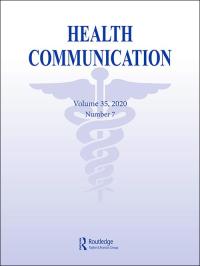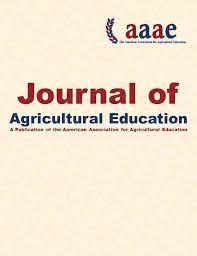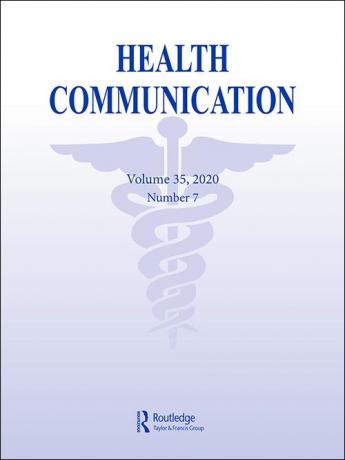Kang Namkoong

Associate Professor, Communication
Director, Center for Health and Risk Communication, Communication
Education
Ph.D., , University of Wisconsin
Research Expertise
Communication Science
Digital Media
Health Communication
Dr. Namkoong's research focuses on the interrelationships between emerging media and health communication. His areas of focus include the effects of web- and mobile-based eHealth systems, cancer communications, and occupational health and safety education, and mental health interventions. His research program consists of two interrelated lines of inquiry: treatment-oriented health interventions and prevention-oriented health campaigns. The former concerns the effects of interactive communication technologies on patients' physical and psychological health benefits, while the latter concerns the potential of ICTs in addressing health outcome disparities among underserved populations.
Dr. Namkoong has published over 40 peer-reviewed articles in prestigious journals such as the Journal of the National Cancer Institute Monographs, Cancer, Health Psychology, Journal of Health Communication, Journal of Public Health, and Health Communication. For his research on emerging media and health communication, Dr. Namkoong has received several extramural grants from government funding agencies, including the National Institute for Occupational Safety and Health (NIOSH).
Current research projects: Dr. Namkoong is currently exploring the potential of mobile and immersive media technologies for public health interventions. For example, he has been involved in interdisciplinary research projects that focus on tackling health disparities in underserved populations. With a grant from NIOSH, he has developed smartphone-based health communication apps and virtual and augmented reality interventions to promote agricultural health and safety outcomes, addressing important public health concerns in rural communities.
Publications
Developing the Digital Health Communication Maturity Model: Systematic Review
New article in the Journal of Medical Internet Research
Author/Lead: Grace Jeonghyun Kim, Kang NamkoongDigital health has become integral to public health care, advancing how services are accessed, delivered, and managed. Health organizations increasingly assess their digital health maturity to leverage these innovations fully. However, existing digital health maturity models (DHMMs) primarily focus on technology and infrastructure, often neglecting critical communication components. This systematic review addresses gaps in DHMMs by identifying deficiencies in user communication elements and proposing the digital health communication maturity model (DHCMM). The DHCMM integrates critical health communication dimensions such as satisfaction, engagement, personalization, and customization to provide a comprehensive evaluation framework.
We followed the PRISMA (Preferred Reporting Items for Systematic Reviews and Meta-Analyses) guidelines to conduct a systematic review of studies selected from 3 databases: EBSCO, PubMed, and ProQuest. Studies were screened and included based on their focus on digital health maturity and communication elements, with the final selection limited to English-language research addressing DHMMs. Of the 1138 initially identified studies, 31 (2.72%) met the inclusion criteria. Current DHMMs heavily emphasize infrastructure while overlooking user engagement and communication; for instance, only 35% (11/31) of the reviewed models incorporated user satisfaction, and less than one-fifth (6/31, 19%) addressed personalization or customization. The DHCMM addresses these gaps with 7 maturity levels, ranging from initial to engaged, and emphasizes user-centered metrics and governance. Quantitative analysis showed substantial variations in communication metrics, with satisfaction metrics incorporated at an average rate of 22% (7/31) across the reviewed models.
The DHCMM shifts the focus of digital health maturity assessments by emphasizing communication and user engagement. This model provides health care organizations with a structured framework to enhance digital health initiatives, leading to better patient outcomes and system-wide efficiencies. The model delivers actionable insights for organizations aiming to achieve advanced digital maturity by addressing underrepresented dimensions. Future research should implement and refine the DHCMM across diverse health care contexts to enhance its effectiveness. The adoption of this model could result in more equitable, user-centered health care systems that integrate technological advancements with human-centered care.
Read More about Developing the Digital Health Communication Maturity Model: Systematic Review
A meta-analysis of the overall effect of mHealth physical activity interventions for weight loss and the moderating effect of behavioral change theories, techniques, and mobile technologies
This meta-analysis examined the effectiveness of mHealth physical activity interventions for weight loss compared with non-technology/usual care interventions and the moderating effects of behavioral change theories, techniques, and mobile technologies.
Author/Lead: Kang NamkoongNon-ARHU Contributor(s): Yan Qin and Xiaojing (Romy) Wang, lead authors

Mobile technologies offer the potential for efficacious and cost-effective lifestyle interventions for weight loss. Extant research indicates that mobile health (mHealth) lifestyle interventions are potentially effective and practical methods of weight loss, but it is less known what intervention characteristics are associated with weight loss effects. This meta-analysis examined the effectiveness of mHealth physical activity interventions for weight loss compared with non-technology/usual care interventions and the moderating effects of behavioral change theories, techniques, and mobile technologies. A total of 24 studies were identified based on inclusion criteria. Weight loss was the primary outcome. The results showed a medium significant effect size (d = 0.395; 95% CI = 0.243, 0.546; Z = 5.107, p < 0.001; N = 5146) favoring mHealth interventions. Interventions were significantly more effective when wearable devices were used (QB = 4.102, df = 1, p < 0.05) and when feedback was employed (QB = 4.566, df = 1, p < 0.05). The implications for future mHealth intervention design are discussed.
The Influence of Stigmatizing Messages on Danger Appraisal: Examining the Model of Stigma Communication for Opioid-Related Stigma, Policy Support, and Related Outcomes
This study used the model of stigma communication in two online factorial experiments.
Author/Lead: Victoria LedfordContributor(s): JungKyu Lim, Kang Namkoong, Junhan Chen, Yan Qin
Drug overdose is a leading cause of injury and death in the United States, and opioids are among the most significant of causes. For people with opioid use disorders (OUDs), opioid stigma can lead to devastating consequences, including anxiety and depression. Still, mass media may stigmatize people with OUDs by ascribing stigmatizing labels (e.g., “opioid addict”) and other stigma features to those individuals. However, it is unclear how these stigmatizing messages influence public perceptions of people with OUDs and public support for rehabilitation and Naloxone administration policies. The model of stigma communication (MSC) provides a framework for understanding these relationships. This study used the MSC in two online factorial experiments, the first among college undergraduates (N = 231) and the second among Amazon Mechanical Turk workers (N = 245), to examine how stigmatizing messages about people with OUDs influence stigma-related outcomes. Results reveal that opioid stigma messages influence different outcomes depending on the content of those messages. Classification messages with a stigmatizing mark (e.g., “Alex appears unkempt”) and label (e.g., “opioid addict”) led to greater perceptions of dangerousness and threat in both studies. High stigma classification messages also led to an increased desire for behavioral regulation and social distance in Study 2. Structural equation modeling in Study 1 also supported the applicability of the MSC in the opioid context. Implications for health communication theory development and practice are discussed.
Facebook Ads Manager as a Recruitment Tool for a Health and Safety Survey of Farm Mothers: Pilot Study
A pilot study to explore the efficacy and cost-effectiveness of Facebook advertisements for the recruitment of an online agricultural health and safety survey.
Author/Lead: Kang NamkoongNon-ARHU Contributor(s): Richard R. Burke & Bryan P. Weichelt
Social media platforms have experienced unprecedented levels of growth and usage over the past decade, with Facebook hosting 2.7 billion active users worldwide, including over 200 million users in the United States. Facebook users have been underutilized and understudied by the academic community as a resource for participant recruitment. We performed a pilot study to explore the efficacy and cost-effectiveness of Facebook advertisements for the recruitment of an online agricultural health and safety survey. We undertook a 1-week advertising campaign utilizing the integrated, targeted advertising platform of Facebook Ads Manager with a target-spending limit of US $294. We created and posted three advertisements depicting varying levels of agricultural safety adoption leading to a brief survey on farm demographics and safety attitudes. We targeted our advertisements toward farm mothers aged 21-50 years in the United States and determined cost-effectiveness and potential biases. No participant incentive was offered. We reached 40,024 users and gathered 318 advertisement clicks. Twenty-nine participants consented to the survey with 24 completions. Including personnel costs, the cost per completed survey was US $17.42. Compared to the distribution of female producers in the United States, our advertisements were unexpectedly overrepresented in the eastern United States and were underrepresented in the western United States. Facebook Ads Manager represents a potentially cost-effective and timely method to recruit participants for online health and safety research when targeting a specific population. However, social media recruitment mirrors traditional recruitment methods in its limitations, exhibiting geographic, response, and self-selection biases that need to be addressed.
Increasing Perceived Risk of Opioid Misuse: The Effects of Concrete Language and Image
Using a factorial online experiment, this study found that messages using concrete language made people think more concretely about the negative consequences of opioid misuse.
Author/Lead: Yan QinContributor(s): Junhan Chen, Kang Namkoong, Victoria Ledford, JungKyu Lim

Risk perception is a critical determinant for individuals’ health behavior change, especially for behaviors with distal future consequences. Building on construal-level theory, this study investigates if and how thinking concretely about the negative consequences of opioid misuse influences people’s risk perception toward opioid misuse. Two message cues – images and concrete (vs. abstract) language – are proposed to influence concrete thinking and perceived temporal distance, which in turn influence risk perception directly and through negative affect. Using a factorial online experiment with Amazon Mechanical Turk workers (N = 220), this study found that messages using concrete language made people think more concretely about the negative consequences of opioid misuse. Perceived concreteness, in turn, increased risk perception and negative affect. Negative affect also increased risk perception. The use of images decreased perceived temporal distance, which in turn, changed risk perception through its influence on negative affect. Theoretical and practical implications are discussed.
A Multi-State Evaluation of Secondary Agricultural Education Students’ Performance on Industry-Based Standards
This examination of secondary agricultural education students’ performance was used to determine if students could perform up to industry standards.
Author/Lead: Kang NamkoongNon-ARHU Contributor(s): A. Preston-Byrd, S. Vincent, & J. Mazur

This examination of secondary agricultural education students’ performance was used to determine if students could perform up to industry standards. In this study, the industry standard were blueprints created by engineers at the National Institute for Occupational Safety and Health. Students had to fabricate a Cost-effective Roll-Over Protective Structure (CROPS) to be placed on a tractor within their community. All the pieces of the CROPS were inspected by an outside consultant with experience with inspecting projects and visual inspection of welds. It was found that students struggled the most with fabricating the axel brackets. The axel brackets required the most drilled holes and cuts of all the pieces therefore creating more areas where mistakes could be made. Students fabricated the vertical support tubes with the most accuracy. According to the Data-Driven Decision Model (DDDM), teachers analyzed student work, provided feedback, and need to incorporate this new knowledge into their future instruction to increase the accuracy of their students’ fabrication skills. Teacher trainers are recommended to incorporate this performance data into the summer training to better prepare teachers. The inclusion of teaching strategies need to be created for secondary teachers such as peer evaluation of measurements prior to drilling and cutting.
Predictors of Online News-Sharing Intention in the U.S and South Korea: An Application of the Theory of Reasoned Action
This study demonstrates what motivates media users to participate in the process of sharing online news in two cultures: South Korea and the United States (U.S.).
Author/Lead: Jiyoun KimContributor(s): Kang Namkoong, Junhan Chen
In its use of interactive media technology, the public takes on an important role in disseminating news, especially when sharing it through social networking sites. This study demonstrates what motivates media users to participate in the process of sharing online news in two cultures: South Korea and the United States (U.S.). Employing the theory of reasoned action, this study empirically displays how the intention to share online news is influenced by attitudes and subjective norms. Particularly, this study measures both attitudes toward and subjective norms about (1) the specific news article and (2) social media participation. Our findings reveal more substantial effects that attitudes have on behavioral intention than subjective norms in the U.S. group. The discussion highlights the theoretical and practical implications of our findings.



